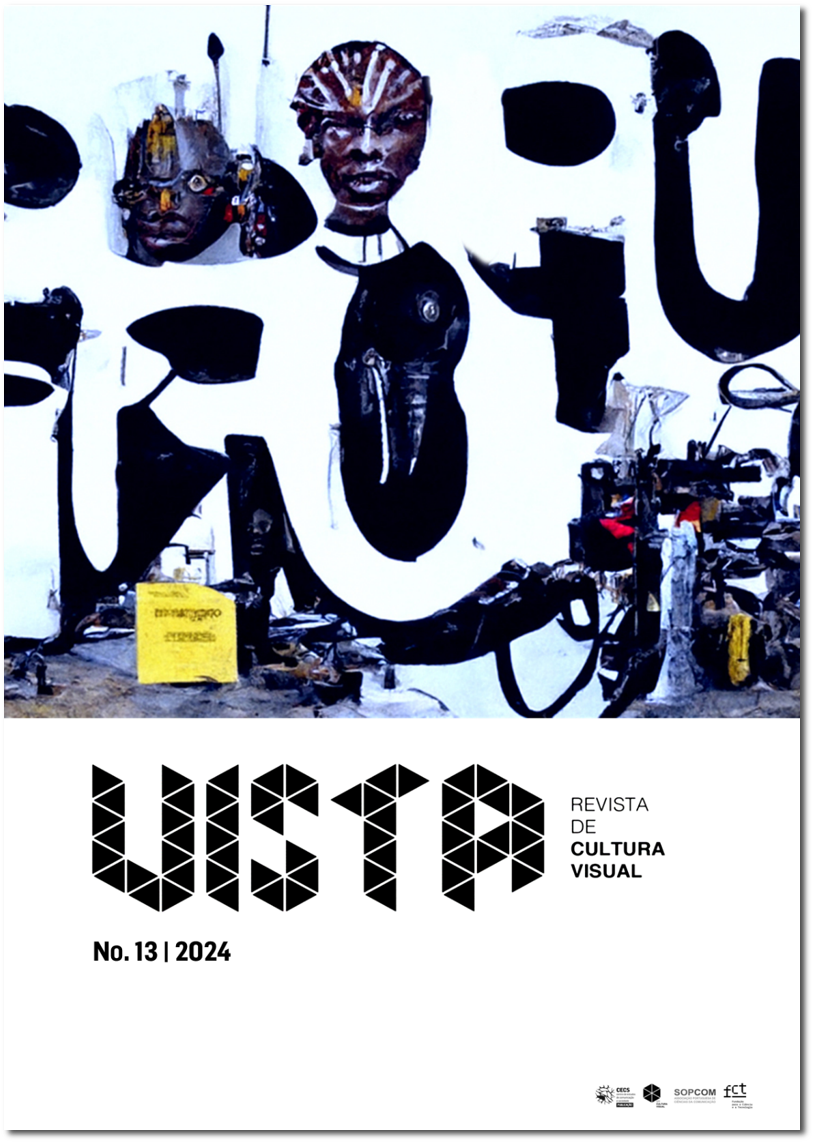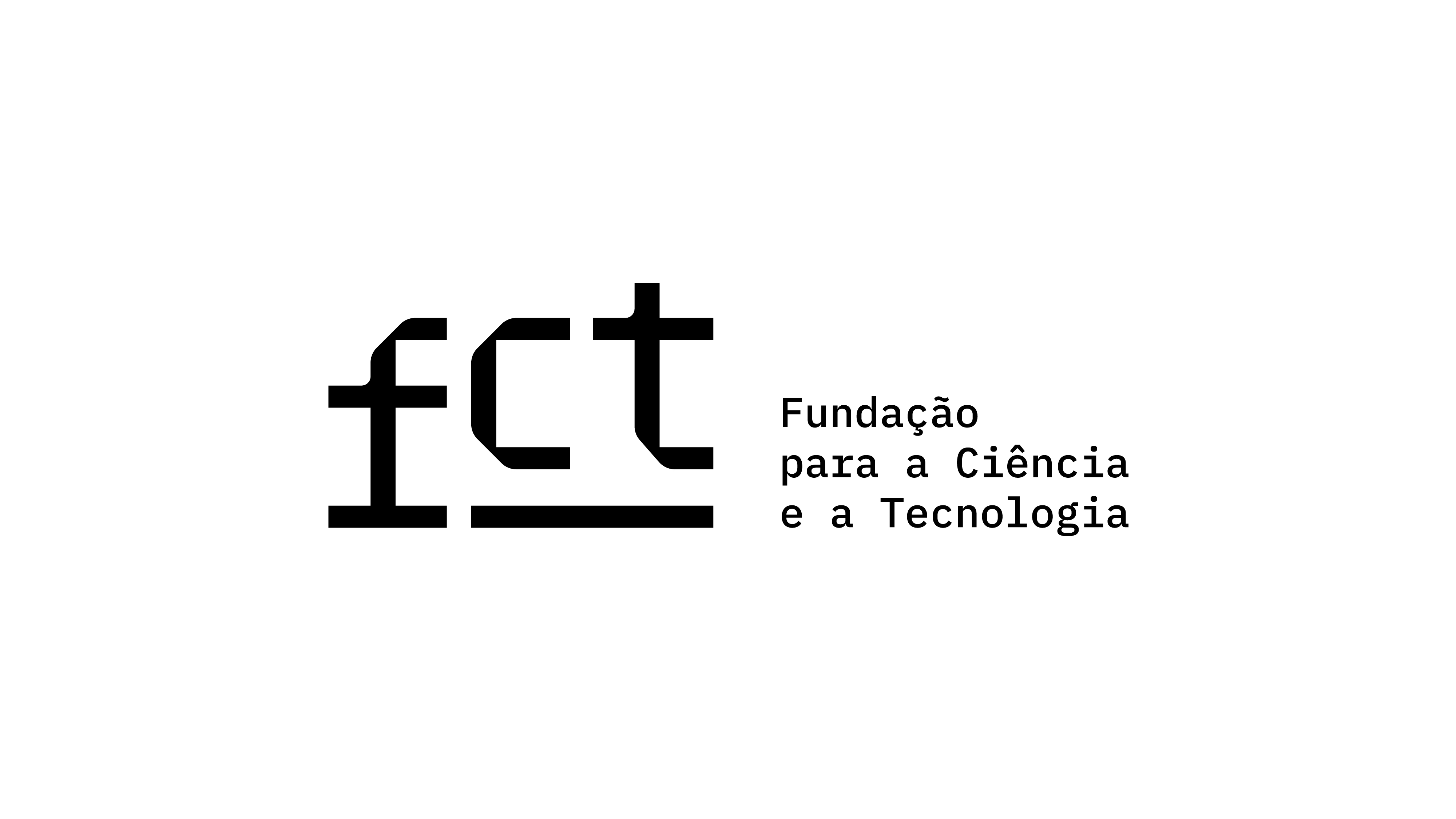Decolonial Twists and Turns of the Tupinambá Cloak: Three Women Artists and Their Work on the Artefact that Became an Icon of Brazilian Identity
DOI:
https://doi.org/10.21814/vista.5484Keywords:
Brazilian women artists, Tupinambá cloak, Indigenous art, decoloniality, decolonial studiesAbstract
This study delves into the artistic and symbolic appropriations of the Indigenous Tupinambá cloak through the work of three Brazilian women artists: Glicéria Tupinambá, Lívia Melzi and Lygia Pape. Based on a visual analysis of their poetics and juxtaposing their creations with the iconographic dimension of the artefact in key historical milestones, we intend to understand the interconnectedness of these artists' works with contemporary art practices. In doing so, we seek to recognise the role of interdisciplinary studies in understanding this pivotal moment in art history, characterised by a paradigm shift influenced by the decolonial movement. This movement has notably elevated the political and activist dimensions of the aesthetic field. Besides discussing the repatriation of objects of ethnographic interest, this case study traces the artistic trajectories of these three artists, whose poetics are examined through the lens of art criticism. This analysis is underpinned by a multidisciplinary theoretical framework that draws from various authors from fields such as art theory and history, as well as cultural and decolonial studies. There is no doubt that the return of the cloak has significantly reignited debates about the return of artefacts expropriated during Brazil's colonial period. However, we intend to point out the importance of recovering the techniques and gestures used by the artists to create and symbolically re-appropriate new cloaks, which is congruent with the reflection on political making in the fields of aesthetics and museology.
Downloads
References
Artista brasileira reflete olhar decolonial sobre mantos tupinambás em Paris. (2022, 21 de outubro). UOL. https://noticias.uol.com.br/ultimas-noticias/rfi/2022/10/21/artista-brasileira-reflete-olhar-decolonial-sobre-mantos-tupinambas-em-paris.htm?cmpid=copiaecola
Ballestrin, L. M. (2017). Modernidade/colonialidade sem “imperialidade”? O elo perdido do giro decolonial. Revista de Ciências Sociais, 60(2), 505–540. https://doi.org/10.1590/001152582017127
Basbaum, R. (2013). Manual do artista-etc. Beco do Azougue.
Borea, G. (2021). Configuring the new Lima art scene: An anthropological analysis of contemporary art in Latin America. Routledge.
Braga, A. L., Streva, J. M., & Zalis, L. Z. (2022, 10 de novembro). Especular pactos sobre o comum. La Escuela. https://laescuela.art/es/campus/library/mappings/especular-pactos-sobre-o-comum-ana-luiza-braga-juliana-streva-e-lior-zisman-zalis-pt
Brasil + 500 Mostra do Redescobrimento. (2023, 29 de novembro). Editores da Enciclopédia. https://enciclopedia.itaucultural.org.br/evento217210/brasil-500-mostra-do-redescobrimento
Brett, G. (2000). A lógica da téia in Gávea de Tocaia/Lygia Pape. Cosac & Naify Edições.
Caffé, J., Gontijo, J., Tugny, A., & Tupinambá, G. (2023). As muitas voltas dos mantos tupinambás. In B. Belisário, E. Rosse, & R. Tugny (Eds.), Poéticas ameríndias: Memórias territórios (pp. 257–288). Editora Escola de Música da Universidade Federal de Minas Gerais.
Canclini, N. G. (2015). Culturas híbridas. Estratégias para entrar e sair da modernidade. Edusp.
Castellano, C. G. (2021). Art activism for an anticolonial future. State University of New York Press.
Césaire, A. (2020). Discurso sobre o colonialismo (C. Willer, Trad.). Veneta. (Trabalho original publicado em 1950)
Chiarelli, T. (2023). O manto tupinambá como matéria e símbolo – Algumas anotações. Arte&Crítica, (66), 64–83.
Cocchiarale, F. (1987). Abstracionismo geométrico e informal: A vanguarda brasileira nos anos cinquenta. Funarte.
Didi-Huberman, G. (2008). Ante el tempo. Historia del arte y anacronismo de las imagines (A. Oviedo, Trad.). Adriana Hidalgo Editora. (Trabalho original publicado em 2000)
Dussel, E. (2003). Transmodernidad e interculturalidad: Interpretación desde la filosofía de la liberación. Erasmus Revista Para el Diálogo Intercultural, 5(1–2), 1–26.
Esbell, J. (2018, 22 de janeiro). Arte indígena contemporânea e o grande mundo. Revista Select. https://select.art.br/arte-indigena-contemporanea-e-o-grande-mundo/
Escobar, A. (2020). Pluriversal politics: The real and the possible. Duke University Press.
Fanon, F. (2021). Black skin, white masks. Penguin Classics.
Foster, H. (2014). O retorno do real: A vanguarda no final do século XX (C. Euvaldo, Trad.). Cosac Naify. (Trabalho original publicado em 1996)
Fuentes, M. A. (2019). Performance constellations: Networks of protest and activism in Latin America. University of Michigan Press.
Gilroy, P. (1993). Small acts: Thoughts on the politics of Black cultures. Serpents Tail.
Hall, S. (1997). Representation: Cultural representations and signifying practices. SAGE.
Hall, S. (2001). Foucault: Power knowledge and discourse. In M. Wetherell, S. Taylor, & S. J. Yates (Eds.), Discourse theory and practice: A reader (pp. 72–81). SAGE.
Lagrou, E. (2013). Arte indígena no Brasil: Agência, alteridade e relação. C/Arte.
Lygia Pape. (s.d.). Manto tupinambá. https://lygiapape.com/tag/manto-tupinamba/
Machado, V. R. (2008). Lygia Pape – Espaços de ruptura [Dissertação de mestrado, Universidade de São Paulo]. Biblioteca Digital USP. https://doi.org/10.11606/D.18.2008.tde-19082008-135305
Mattar, D. (2003). Lygia Pape/Coleção perfis do Rio. Relume Dumará.
Mbembe, A. (2018, 5 de outubro). À propos de la restitution des artefacts africains conservés dans les musées d’occident. Analyse Opinion Critique. https://aoc.media/analyse/2018/10/05/a-propos-de-restitution-artefacts-africains-conserves-musees-doccident/
Mercer, K. (2012). Art history and the dialogics of diaspora. Small Axe, 16(2), 213–227. https://doi.org/10.1215/07990537-1665632
Mignolo, W. (2010). Aiesthesis decolonial. Calle 14, 4(4), 10–25.
Mombaça, J. (2021) Não vão nos matar agora. Cobogó.
Oliveira, E. J. (2022). A fábrica do selvagem e o choque das imaginações. Uma leitura pós-etnográfica da obra de Denilson Baniwa. Quaderni Culturali, 4, 41–51. https://doi.org/10.36253/qciila-2061
Oliveira, J. P. (2020). Os primeiros brasileiros. Arquivo Nacional-Museu Nacional.
Osorio, L. C. (2006). Lygia Pape - Experimentation and resistance. Third Text, 20(5), 571–583. https://doi.org/10.1080/09528820601010403
Paiva, A. S. (2022). A virada decolonial na arte brasileira. Mireveja.
Pape, L. (1998). Entrevista a Lúcia Carneiro e Ileana Pradilla. Nova Aguilar.
Pitman, T. (2021). Decolonising the museum: The curation of Indigenous contemporary art in Brazil. Boydell & Brewer.
Quijano, A. (2005). Colonialidade do poder, eurocentrismo e América Latina. In E. Lander (Ed.), A colonialidade do saber: Eurocentrismo e ciências sociais. Perspectivas latino-americanas (pp. 118–142). CLACSO.
Rancière, J. (2004). The politics of aesthetics: The distribution of the sensible. Continuum.
Ribeiro, D. (2017). O que é lugar de fala? Letramento.
Rojas-Sotelo, M. L. (2023). The tree of abundance: On the Indigenous emergence in contemporary Latin American art. Arts, 12(4), 1–29. https://doi.org/10.3390/arts12040127
Rojas Sotelo, M. (2017). Soberanía visual en Abya Yala. In M. Rojas Sotelo, C. Díaz, E. Giraldo, C. O. Fino, & E. Flórez (Eds.), Reconocimientos a la crítica y el ensayo: Arte en Colombia (pp. 5–15). Ministerio de Cultura; Universidad de los Andes.
Roxo, E. (2021, novembro). Longe de casa: O fascínio, a dor e os equívocos em torno dos mantos tupinambás na Europa. Folha de S. Paulo. https://piaui.folha.uol.com.br/materia/longe-de-casa-2/
Roxo, E. (2023, 27 de junho). A volta do manto tupinambá: Museu Nacional da Dinamarca vai devolver para o Brasil relíquia sagrada que está na Europa desde o século XVII. Folha de S. Paulo. https://piaui.folha.uol.com.br/volta-do-manto-tupinamba/
Said, E. (2007). Orientalismo (R. Eichenberg, Trad.). Companhia das Letras. (Trabalho original publicado em 1978)
SELVAGEM ciclo de estudos sobre a vida. (2023, 1 de junho). 4 - Memórias ancestrais - O manto e o sonho - Glicéria Tupinambá [Vídeo]. YouTube. https://www.youtube.com/watch?v=36HUTPYRNpE
Seta, I. (2023, 28 de junho). Raríssimo manto tupinambá que está na Dinamarca será devolvido ao Brasil; peça vai ficar no Museu Nacional. G1. https://g1.globo.com/ciencia/noticia/2023/06/28/rarissimo-manto-tupinamba-que-esta-na-dinamarca-sera-devolvido-ao-brasil-peca-vai-ficar-no-museu-nacional.ghtml
Spivak, G. C. (2018). Pode o subalterno falar? (S. Almeida, M. Feitosa, & A. Feitosa, Trads.). Editora UFMG. (Trabalho original publicado em 1985)
Stewart, K. (2007). Ordinary affects. Duke University Press.
Suckaer, I. (2017). Arte indígena contemporáneo: Dignidad de la memoria y apertura de cánones. Samsara/Fonca.
Tupinambá, G. (2021). O manto é feminino. Assojaba Ikunhãwara. In J. Caffé, J. Gontijo, A. Tugny, & G. Tupinambá (Eds.), Kwá yepé turusú yuriri assobaja tupinambá: Essa é a grande volta do manto tupinambá (pp. 18–25). Conversas em Gondwana.
Walsh, C. (2009). Interculturalidad, Estado, sociedad: Luchas (de)coloniales de nuestra época. Universidad Andina Simón Bolívar/Abya-Yala.
Williams, R. (1977). Marxism and literature. Oxford University Press.
Zalis, L. Z. (2022). A vingança das imagens. In Tupi or not tupi (pp. 5–11). Galeria Ricardo Fernandes.
Downloads
Published
How to Cite
Issue
Section
License
Copyright (c) 2024 Alessandra Simões Paiva

This work is licensed under a Creative Commons Attribution 4.0 International License.
Authors own the copyright, providing the journal with the right of first publication. The work is licensed under a Creative Commons Attribution 4.0 International License.













